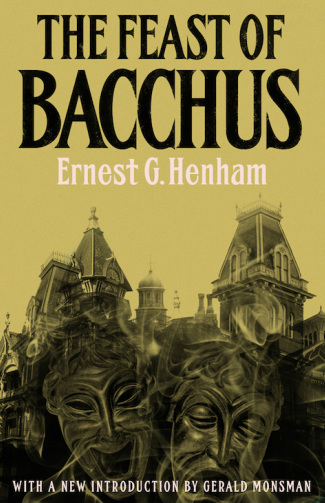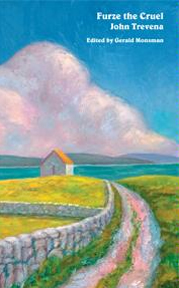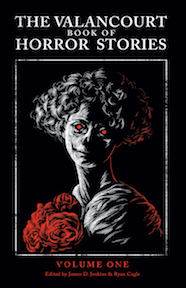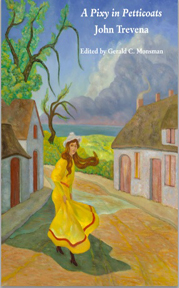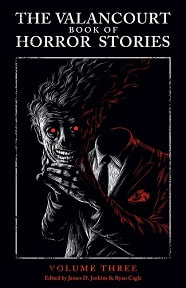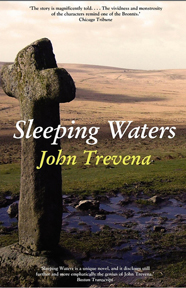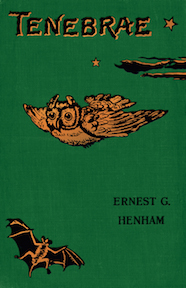|
BOOK DETAILS
Trade paper ISBN-13: 978-1941147078 List Price: $17.99 U.S. Pages: 236 Published: 2014 |
The Feast of Bacchus (1907)
Ernest G. Henham With a new introduction by Gerald Monsman Book Description
In the remote hamlet of Thorlund stands the manor house known as the Strath, an eerie place that exercises a mysterious hold over anyone who enters it. The site of tragedy in 1742 when its owner, Sir John Hooper, turned highwayman and met his death on the gallows, the Strath has remained vacant for over a century, a pair of hideous masks its only occupants. When the novel opens, the Strath’s new owner has just arrived from America to take possession of the house, but he is soon found horribly murdered. Now the next heir, young Charles Conway, has come to the Strath, and the house begins to work its baneful influence on him and on the local residents, causing them to behave in bizarre and violent ways. What is the connection between the sinister power of the Strath and the ghastly masks that adorn the wall? And once Conway and the others are drawn within the evil place, can any of them possibly survive? “One of England’s lost novelists, a writer of startling abilities” (Times Literary Supplement), Ernest G. Henham, who also published under the pseudonym “John Trevena,” was the author of bizarre Gothic fantasies such as Tenebrae (1898) and The Feast of Bacchus (1907), as well as a number of unusual and highly imaginative works set in Dartmoor. This first-ever republication of Henham’s novel includes a new introduction by Gerald Monsman. |
reviews
“[A] book of strange adventures, of ghostly, nightmare visions; you will want to read it at a sitting, but do not begin it at bedtime unless your nerves are in a thoroughly healthy condition” – The Reader
“[Q]uite a remarkable book . . . Mr. Henham has the exceptional gift of lending an atmosphere of reality to the fantastic. … Some people will find the book enthralling: others may pronounce it quite mad, but everyone must recognise its undeniable cleverness.” – The Outlook
“This strange story … has a tropical luxuriance of imagination quite unusual in works by English writers. . . . an atmosphere of eeriness and mystery strongly reminiscent of Poe. The plot is clever, the characters well-drawn; but it is in his power to create an atmosphere of vagueness and suggestion that Mr. Henham may be said to possess something very like genius.” – The Publisher
“[Q]uite a remarkable book . . . Mr. Henham has the exceptional gift of lending an atmosphere of reality to the fantastic. … Some people will find the book enthralling: others may pronounce it quite mad, but everyone must recognise its undeniable cleverness.” – The Outlook
“This strange story … has a tropical luxuriance of imagination quite unusual in works by English writers. . . . an atmosphere of eeriness and mystery strongly reminiscent of Poe. The plot is clever, the characters well-drawn; but it is in his power to create an atmosphere of vagueness and suggestion that Mr. Henham may be said to possess something very like genius.” – The Publisher
ALSO AVAILABLE THROUGH ONLINE RETAILERS
|
PAPERBACK
Amazon US Amazon UK Barnes and Noble Wordery* *free shipping to 40 countries Fishpond* *free shipping worldwide Waterstones |
EBOOK
Kindle US |
MORE TITLES BY THIS AUTHOR
AUTHOR BIOGRAPHY
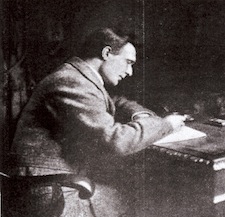
Ernest George Henham (“John Trevena”) was born in England in 1870, and as a young man travelled to America and Canada and lived for some time in the Canadian Northwest. His experiences in Canada, including his memories of the Riel Rebellion in the 1880s, provided the inspiration for some of his early works, which were published under his own name. As Ernest G. Henham, he published Menotah: A Tale of the Riel Rebellion (1897), which ran into at least three editions, God, Man & The Devil: A Novel (1897); the weird Gothic horror novel Tenebrae (1898); Bonanza: A Story of the Outside (1901); Scud: The Story of a Feud (1902); The Plowshare and the Sword: A Tale of Old Quebec (1903); ‘Krum’: A Study of Consciousness (1904); and The Feast of Bacchus: A Study in Dramatic Atmosphere (1907).
Suffering from ill health, he moved to Dartmoor around this time. In the words of a contemporary, “It is one of the strangest facts in literary history that a man, who had defined his place as a writer of fiction with nine novels or so, published under his own name, should have seen fit, after the Boer War, to begin his career afresh and write a long series of commercially unsuccessful novels under a pseudonym.” However, this was what Henham did, publishing A Pixy in Petticoats anonymously in 1906 before adopting the pseudonym John Trevena in 1907 for publication of Furze the Cruel. Furze was the first in a trilogy of novels focusing upon Dartmoor life, followed by Heather (1908) and Granite (1909). He continued to write prolifically, achieving widespread critical acclaim but little commercial success; his notable works include Bracken (1910), the story collection Written in the Rain (1910), Wintering Hay (1912), which the Los Angeles Times ranked with the works of Turgenev and Dostoevsky, Sleeping Waters (1913), and Moyle Church-Town (1915). Trevena’s life has become so shrouded in obscurity that as of the time of this printing even his date of death is not known, but he is believed to have died around 1946. Until Valancourt Books’ edition of Furze the Cruel in 2010, all his works were out of print, despite the near-universal critical consensus during his lifetime that his works would live on among the classics of English fiction.
Suffering from ill health, he moved to Dartmoor around this time. In the words of a contemporary, “It is one of the strangest facts in literary history that a man, who had defined his place as a writer of fiction with nine novels or so, published under his own name, should have seen fit, after the Boer War, to begin his career afresh and write a long series of commercially unsuccessful novels under a pseudonym.” However, this was what Henham did, publishing A Pixy in Petticoats anonymously in 1906 before adopting the pseudonym John Trevena in 1907 for publication of Furze the Cruel. Furze was the first in a trilogy of novels focusing upon Dartmoor life, followed by Heather (1908) and Granite (1909). He continued to write prolifically, achieving widespread critical acclaim but little commercial success; his notable works include Bracken (1910), the story collection Written in the Rain (1910), Wintering Hay (1912), which the Los Angeles Times ranked with the works of Turgenev and Dostoevsky, Sleeping Waters (1913), and Moyle Church-Town (1915). Trevena’s life has become so shrouded in obscurity that as of the time of this printing even his date of death is not known, but he is believed to have died around 1946. Until Valancourt Books’ edition of Furze the Cruel in 2010, all his works were out of print, despite the near-universal critical consensus during his lifetime that his works would live on among the classics of English fiction.

